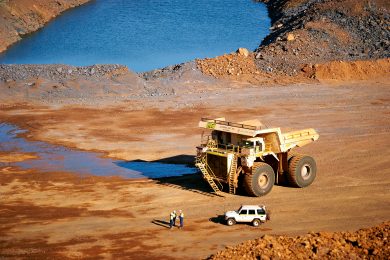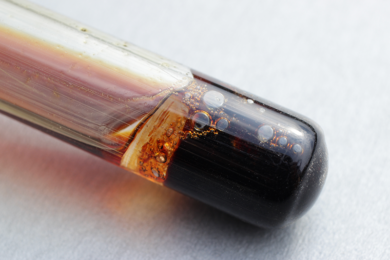This week, Zhang Jijing – Chairman, CITIC Pacific Mining, in a keynote address during Mines and Money in London, shared with CITIC’s experiences in building the largest magnetite iron ore mine in Australia. Well known to IM readers, Sino Iron is the biggest-ever overseas investment in the resources sector by a Chinese company.
Jijing stated: “Today, I’m going to give you some background on what we do in Australia: an insight into our operation; our trials, our tribulations and our motivations. I’m going to explain what makes us different from those Australian miners who have gone before us. I will also share some of my observations about our experiences as a Chinese company, embarking on a greenfield megaproject in a foreign land. First, some background. The company I chair is CITIC Pacific Mining. We’re an Australian subsidiary of CITIC Limited, a Hong Kong listed company and China’s largest conglomerate. CP Mining, as we call it, has built, and is now operating Sino Iron, Australia’s largest magnetite processing facility and, perhaps soon, the world’s biggest.”
He adds on the background: “Many of you might know or have heard of CITIC. Its roots can be traced to the beginning of China’s opening up and reform in the late 1970s. CITIC became a key window on China for both foreign and domestic investors. A partner of choice for foreign companies seeking a foothold in China, and conversely a leader in Chinese investment outside China. Nearly 40 years later, CITIC has grown in lockstep with China. Today CITIC has more than 190,000 employees across the globe, and a net asset value of around £68 billion. Its main businesses span financial services, resources and energy, manufacturing, engineering contracting and real estate.”
CITIC began investing in Australia in 1986, when it acquired a 10% interest in the Portland aluminium smelter in Victoria for 83 million pounds. At the time it was among China’s largest external investments. This has proven to be a very successful, long-term partnership with Alcoa – the well-known global bauxite miner and aluminium producer. And now three decades on, and after making other investments in Australia, we are now the largest magnetite iron ore producer in the country.
Moving on to Sino Iron itself he commented: “From nothing, we’ve built a fully integrated, next-generation pit-to-port mining, processing and export operation. A smaller scale mine has operated in Tasmania for many years and, more recently, the Karara project is being developed in Western Australia’s Mid-West. But Sino Iron represents the Pilbara’s first dedicated magnetite mine. We currently have a design capacity of 24 Mt of concentrate per year and a mine life of over 30 years. As you know, the Pilbara’s reputation as a mining province is based on half a century of successfully exploiting vast inland deposits of haematite, also known as direct shipping ore. When the Australian Government eased the ban on iron ore exports, just a few million tonnes were being mined. Today, Australia ships about 800 Mt annually, accounting for just under half of global
production. In the past 60 years, we’ve seen the creation of towns, vast networks of railways across the desert, and some of the busiest bulk export ports in the world. As a result, the Pilbara is now regarded as the engine room of the Australian economy. But it must be remembered that realising value from these in-ground resources was not immediate. It took patience, vision, and the cooperation of government. At Sino Iron, we can see parallels with what we’re doing.”
He continues: “This is what our mining, processing and port areas looked like when the project began – a completely blank canvas. When one of our senior people flew in during the early days, the helicopter pilot wasn’t even sure he’d arrived at the right place. There was nothing but coastal scrub and red earth. We’re often described as newcomers to the Australian iron ore sector. In terms of taking Australia’s magnetite iron ore industry to a completely new level, there is some truth to this – though we prefer the term pioneers.”
The fine concentrate from Sino Iron is mixed with water and pumped through a 30 km slurry pipeline down to a new port at Cape Preston. It’s the first greenfield port development in the Pilbara in more than 40 years. After dewatering and stockpiling, the product is barged to deepwater moorings. Here, it is transferred onto mini Cape-size vessels, for the journey to CITIC’s steel mills in China. This transhipping technique is another first for Western Australia’s iron ore industry.
“To process magnetite ore into a high-value product requires a lot of water and a lot of power. So we built a desalination plant, with the same capacity as one which could service a city the size of Birmingham here in England – 51 gigalitres a year. We also constructed a 450 MW gas-fired power plant. It’s a combined-cycle plant, where heat and steam is captured and converted to energy. This makes the plant 40% more efficient than open cycle generation and dramatically lowers our carbon emissions. Once again, this is one of the largest, and certainly cleanest, baseload power plants in Western Australia.”
The process turns low-grade magnetite ore of little or no commercial value into a premium magnetite concentrate of around 65% Fe, ideal for steelmaking, particularly in China where domestic production is almost all magnetite. “Until our investment, the low grade ore stayed in the ground.
Magnetite is now emerging as an important future resource for Australia – particularly so as the quality of existing iron ore declines and some existing mines reach the end of their lives.”
On the timing and cost of the project development he commented: “The unprecedented scale and complexity of Sino Iron has meant that significant time and capital were invested. It didn’t help that we began at the height of a mining and construction boom, when labour and materials were at a premium. Even the Australian dollar was unhelpful, as it rose to a record high. For those of you familiar with Australia, you’d understand there probably wasn’t a major project conceived and constructed at the time which didn’t suffer in terms of cost and delay. Some were even cancelled.
Regardless, I’m proud to say that, with determination and commitment, CITIC Pacific Mining has now taken its place as Australia’s newest iron ore producer and exporter. We’ve helped create a new downstream iron ore processing industry in Australia. All six production lines have commissioned, with the last one starting six months ago. We’re now ramping up production and expect to export more than 10 Mt this year. For us, this is only the end of the beginning.”
On why the project was advanced in the first place he adds: “I can assure you that we share the same commercial objectives as every western CEO, CFO or investor in this room. I sometimes find it curious the way investments by Chinese companies are portrayed in many western countries. Often, we’re simply branded by media as China – whatever that means. When you think about it, it’s like branding Chevron as America or Tesco as Britain. I can assure you that we’re very much our own corporate entity, with our own approach and very clear commercial objectives. I’m sure other China companies will tell you the same. Getting back to our motivations, at this point, you should know that CITIC Pacific is the largest dedicated producer of special steels in China. Our annual capacity is 9 Mt and our products are sold to industries such as auto, machinery manufacturing, power generation and shipping to name a few. This business has been one of the most profitable of all steel companies in China. Each year, our steel plants consume over 10 Mt of iron ore sourced from places like Australia, Brazil, India and some domestically. Naturally, they require a secure and long-term source of good quality ore. So, since 2013, Sino Iron has been shipping fine quality concentrate to our steel plants, as well as other steel producers in China. The magnetite concentrate Sino Iron is producing is high grade, with low alumina and phosphorous content. This makes it perfect for steelmaking and, as a result, it receives a premium at market.”
Concluding Jijing says: “It’s no secret that producing magnetite product is more expensive than direct shipping ore. Right now our production volume is still below our design capacity. As a result, cost per tonne is high at the moment. To get this down, we need to ramp up production as quickly as possible to achieve economies of scale. An increase in the iron ore price would also be nice. But when the upswing occurs, we need to have our costs low to fully capitalise on the opportunity. Our objective is to become the lowest cost, large scale magnetite producer in the world. Of course, our journey to build Sino Iron has not been a smooth one. Aside from the macro environment I mentioned earlier and managing the complexity that comes with a project with many moving parts, we had additional challenges from operating in a foreign land. In one of his letters to shareholders, CITIC’s Chairman outlined the challenges and takeaways from our Australian experience: local knowledge and expertise, meeting global standards, risk mitigation and corporate social responsibility. I believe that what we have learnt is of invaluable assistance to other Chinese companies seeking to invest in overseas jurisdictions, for it has surely strengthened our own organisation.”










